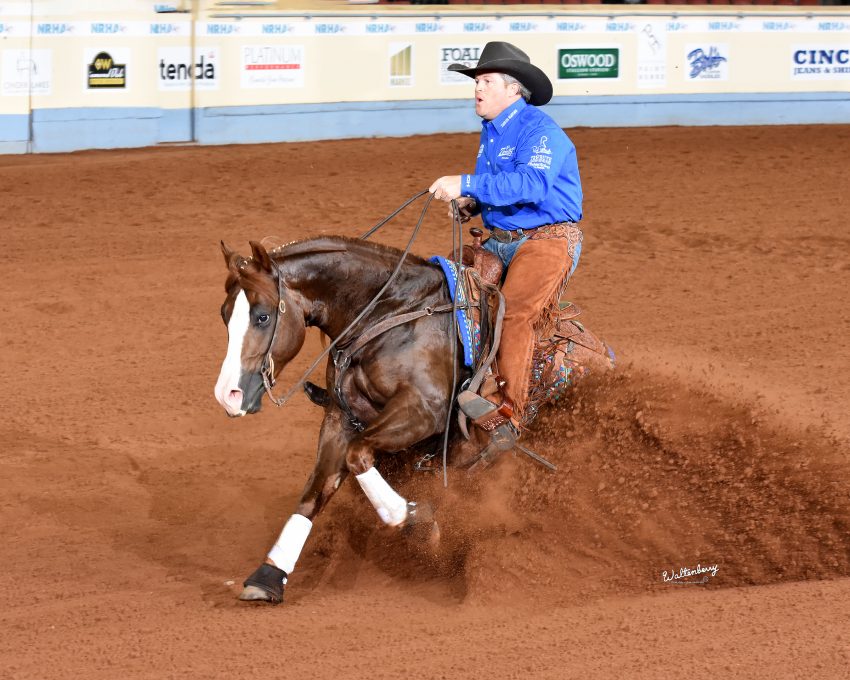Everything has a beginning. Each story begins with the first word, and each day begins with the first glimmer of sunrise. Each horse show begins with the first concept, just as each Million Dollar Owner began with a first horse. NRHA Futurity Champions are no exception, as each one started with a solid foundation.
While it is sometimes a known professional, often these hard-working colt starters, pioneering a prospect’s first experiences under saddle, get little mention. They sit on the sidelines, proudly watching the youngsters they started go on to become champions. Each champion, built up from the carefully constructed foundation that their first handlers established, is special in some way to the one who began their careers.
Tremblay Performance Horses & Ten Thirty
Angie, Rafael, and Ethan
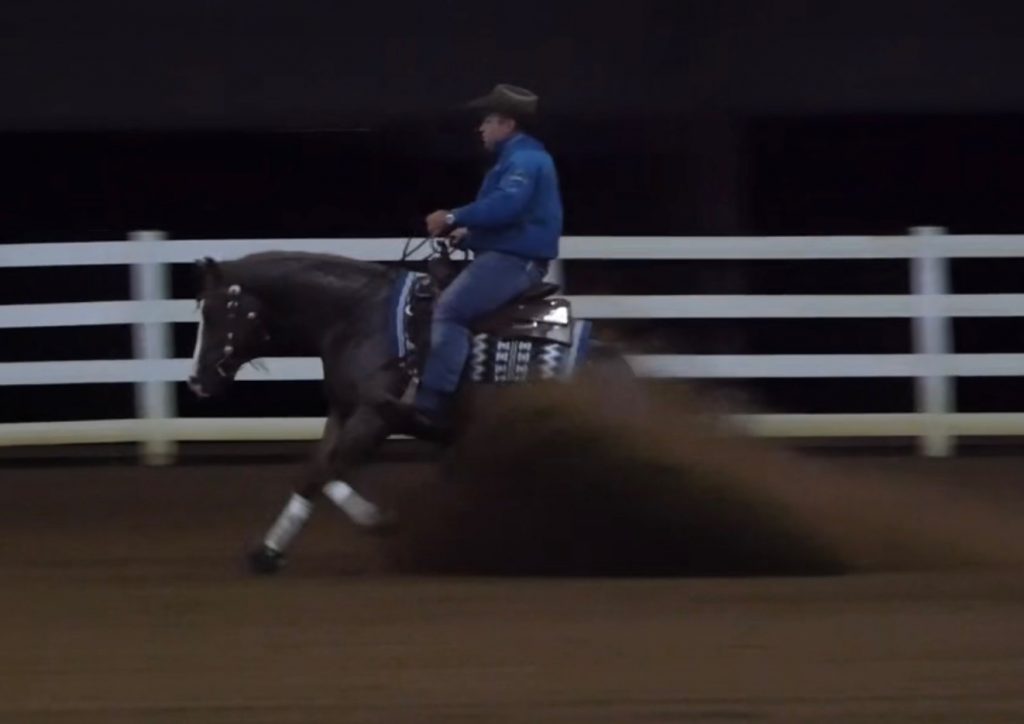
When Casey Deary rode into the Jim Norick arena on Ten Thirty, first in the draw of the L4 Open Finals, he stole the show. The crowd recognized greatness and let it be heard. Before every great performance comes a great foundation, and Ten Thirty’s was no exception.
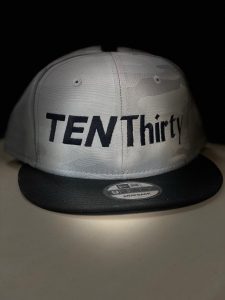
“My brother, Fred, bought him at the NRHA Futurity Sale as a yearling,” Dany Tremblay, Tremblay Reining Horses co-owner and head trainer, said. “I remember, right after we bought him – on the same day – Fred went and had hats made with his name on them. He knew he was going to be special from day one.”
Tremblay Reining Horses, located in Overbrook, Okla., operates a three-tiered colt starting program shared between employees Angie, Rafael, and Ethan, with each rider progressing the horse a little further in its training before handing the reins over to Dany.

Angie began by teaching Ten Thirty all of the groundwork and putting the first few rides on him. “He was a really feely colt,” she said. “It took me a little bit longer on him than on the other horses to desensitize him to the pads and the saddle and everything. He didn’t want to be bad at all; he was just so feely and special.”
Angie was working with Canadian racehorses when she met Tremblay. She said, “They were looking for help so I came down to try, and I loved the job. I began to start colts, and I really love that part, so I just kept going.”
Angie took Ten Thirty through the very basics of moving forward comfortably under saddle and turning left and right in a halter. She believes that gaining a colt’s trust is important as she puts the very first layers of the foundation on them. “I want them to trust me while I’m teaching them the good stuff, so they enjoy doing it. That’s my part of the job,” she said. “I like getting them at the start when they don’t know anything and seeing how they learn so fast. After just two days, there’s such a big change already. Every time, I can’t believe how quickly they learn.”
After Ten Thirty had learned Angie’s lessons well, his training was passed to Rafael.
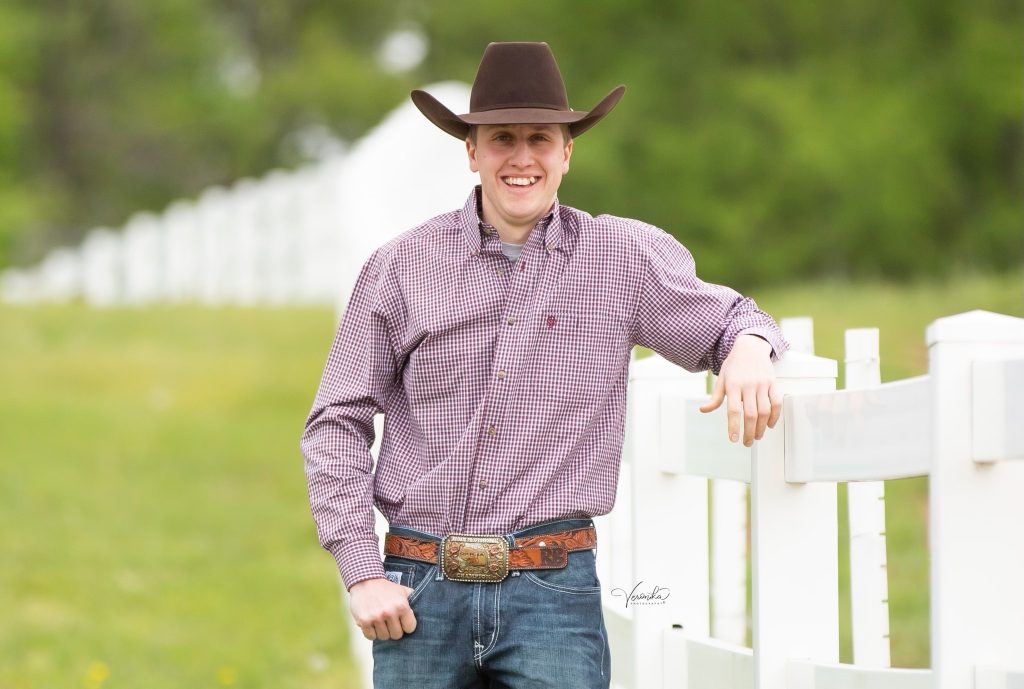
Rafael’s start with horses came on a lesson horse near his home as a child. When he was about 10 years old, his dad bought him his first horse. After he met Dany in Canada, he decided he wanted to turn his passion into a career and called to see if he needed help. The rest is history.
Rafael had trained other futurity finalists, but never one quite like Ten Thirty. “My first ride on Ten Thirty was very easy. He never bucked or anything,” Rafael said. “He kind of became my favorite right off in the beginning. Just the way he moves, it is really easy for him to get around, and he’s really willing to go forward and then come right back. It was special because he is really athletic. I remember when I first started teaching the turnaround, it was so easy for him. He could just step around, and he really wanted to stop with such natural ability.”
Rafael believes that cultivating a willing attitude is important to keep in mind when starting young horses. He said, “He has to be willing to do things, and needs to love his job. When you have one like that, you just want to do it.”
With slide plates fitted and the basics of the stop taught by Rafael, Ethan Willey took over Ten Thirty’s training. “I had watched him for the first few months of his training with Angie and Raf, and I liked him a lot,” Ethan stated. “He looked super nice. When I started riding him, he had all of the pieces there. He could stop a little, and turn a little, and lope great. Everything was really easy for him. I only rode him for a couple of months, and he was just surpassing all of the other colts.”
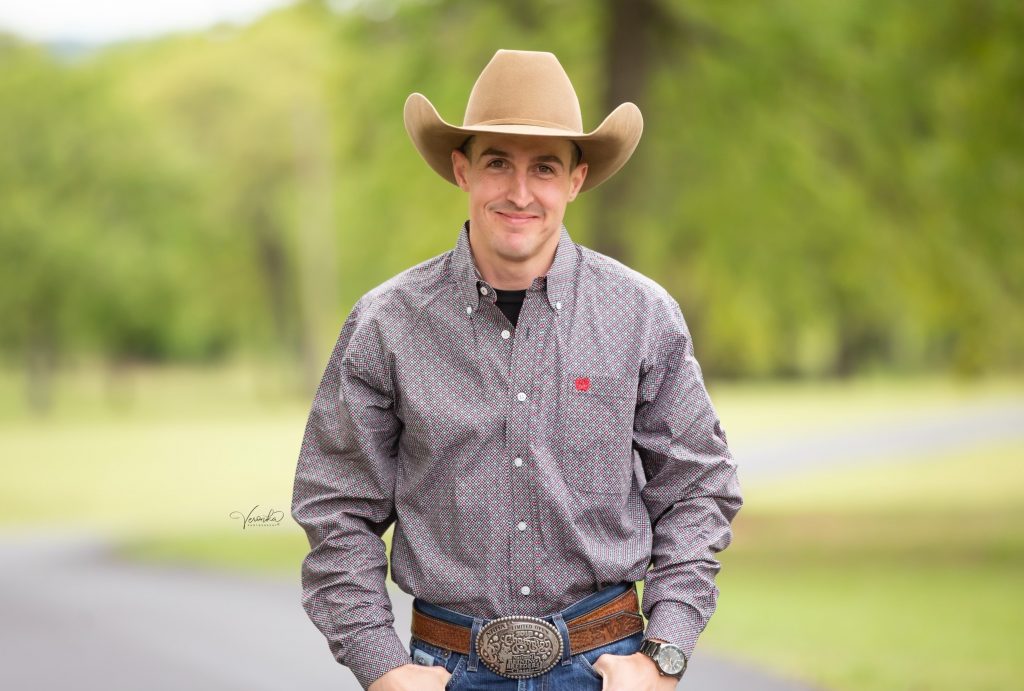
Ethan grew up in Vermont riding and starting colts, leading him to his first exposure to reining horses when he took a job with Bob Loomis in Marietta, Okla. Ethan went on to work for many other top-level trainers before landing at Tremblay Reining Horses. “I just went and talked to Fred and Dany because I wanted to learn his program and train horses like him,” he shared. “I have ridden several really nice horses, and I knew Ten Thirty was special, but we have a lot of good ones. We knew he was special, and he proved it.”
Ethan remembers the last time he rode Ten Thirty vividly. “He was really wanting to be something special, and I remember talking to Dany about him saying, ‘You need to ride this horse.’ He rode him the next day, and he never gave him back. I never rode him again after that,” he recalled with a grin.
Dany said, “He was so big and so strong. He was always wanting to know what was going on and always tried really hard to understand what you were asking. He wanted to do things big time from day one. He was probably, a little too much for me actually, but Casey [Deary] likes horses with a lot of feel like that and got along with him well.”
The whole Tremblay Performance Horses team was in Oklahoma City on that historic December day when all of their hard work came to fruition. Angie said, “I just felt proud. It was fun to see your work go a long way and do well.”
Tremblay is pleased with his employees’ parts in the colt’s success. He said, “I’m so proud of my team, of what they’ve done with all my horses, especially with that one, that made a futurity champion. It is not an easy thing to do. The foundation is the principal thing of any horse. You know, I think that everybody knows, now, that if a horse wins the Futurity, he had a good start in his career. I’m sure of that and because of all my team here.”
Rancho El Fortin currently owns the son of Gunnatrasha out of Dainty Little Step after purchasing him from Tremblay Reining Horses before the Futurity.
Adam Hendrickson & Trashinyurdreams
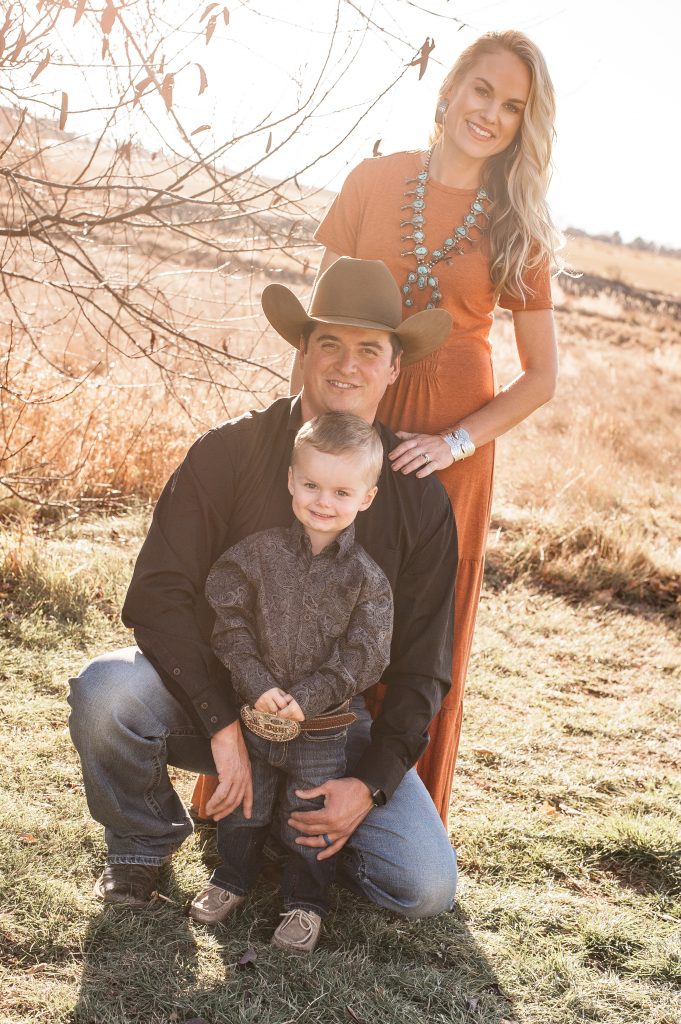
Jesse Beckley trained Trashinyurdreams from the start to the Levels 3 and 2 NRHA Futurity Championships in 2021, but he wasn’t quite the colt’s first ride. Trashinyurdreams was purchased from Rhoades River Ranch by Judy Box and Adam Hendrickson by the side of a recipient mare they purchased with his mother, This Chicsdundreamin. While Hendrickson likes to keep a few colts to ride himself, that year, they had too many and needed to move some.
“Adam had about five weeks on him. I’d been searching hard for a nice two-year-old for Norma [Siebert], my client. I’d been around a lot of places looking and Adam phoned me, and he said, ‘I have the right horse, right here,’ and boy, he sure did!” Beckley said with a smile after winning the Futurity Championships.
“Jesse did such an awesome job. It was just a perfect match, there, training that horse all the way through. I know he had some ups and downs because we talked about it, but once those two got together, it was just a really great fit,” Hendrickson said, “I couldn’t be happier for Norma for having him. She’s bought a couple of horses from us now that she’s had a lot of success from. Jesse’s a really good friend of mine and I’m happy and proud for them for doing so well on that horse.”
Early on Transhinyurdream’s willing nature was evident. Hendrickson said, “He was easy, one of the easiest ones I’ve ever had [to halter break]. I’d like to say that all the good ones are like that, but I’ve had some crazy ones that were good horses in the end too.”
As a matter of fact, Hendrickson said that during the short time he had him in training, it was the colt’s mind that made him a standout. “I liked his brain. He would think about things instead of overreacting or underreacting, either way. He was really laid back and pretty damn smart,” Hendrickson shared. “When he left my place, we could walk, trot, lope around, but that was about it. He was pretty green. We were, maybe, turning around a little bit as one would do with that much training. We couldn’t have known how good he was going to be at that point.”
Hendrickson grew up riding horses and working cattle in Jamestown, N.D., but didn’t see a reining pattern until he was in college at National American University in Rapid City. While there, he was approached by reining trainer, Don Ulmer.
“That’s how I got started. Honestly, when I went to work for him, I still had never even seen reining,” Hendrickson said. “He asked me to come and start colts, and then pretty soon, he was asking me to do a little bit more of this, a little bit more of that. Like I said, I just kind of fell into it.”
Hendrickson went on to earn over $286,600 in NRHA Lifetime Earnings and landed at Judy Box Quarter Horses in Windsor, Colorado where they run a full-scale operation. “We have just four broodmares -really good broodmares. We breed and raise them, train them, and sell them. We just kind of do the whole thing here,” he said.
Ricardo Amaral, Matteo “Willie” Argentero & Sparklins Last Dream
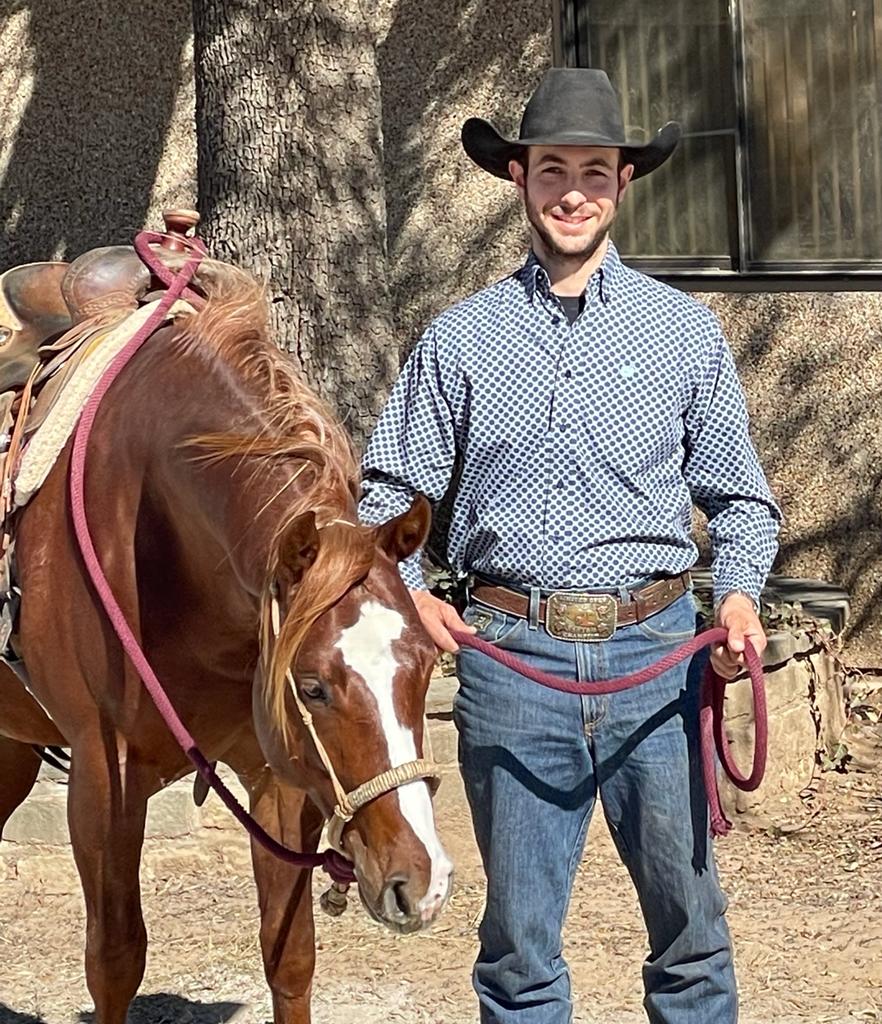
Ricardo Amaral grew up on a Brazilian farm with his father and possessed an addictive love of horses. At 15, he started taking colt starting lessons that later advanced to reining lessons. As soon as he could make it work, the addiction became a profession, and he opened a training center. For the next several years, Amaral’s experience grew as he worked as a trainer and breeder in many different cities in Brazil.
Amaral understands that the foundation you put on a colt is paramount to its future. He said, “What I try to emphasize is that it has to be pleasant for the horse to be trained. Making a good base for a colt is everything. After a good foundation is established, the colt can go to any trainer to be finished. The training must be objective and the program simple, so you won’t spend a lot of time training the horse. My theory is that less is more when it becomes pleasant for the horse!”
Amaral felt that his big break came when fellow Brazilian Fernando Salgado offered him employment at his facility in the United States. “I accepted because it was a dream for me,” he said.
Amaral worked for Salgado for a year before being hired by Casey Hinton. It was during this tenure that Amaral met the filly, owned by Viola Scott, that was to become the Level 1 NRHA Open Futurity Champion under Hinton’s assistant trainer, Abby Kampmann.
Sparklins Last Dream, lovingly called “Nala,” is by $7 Million Dollar Sire Magnum Chic Dream out of the great Shining Spark’s full sister, Still Sparklin. “She was always very honest and easy to train,” Amaral stated. “She had a very good mind. She was an easy and good filly to train. I loved her. I had no way of knowing she would be a champion, but I was sure she would be a great athlete.”
Although his work visa expired and he had to return to Brazil early in Nala’s training, Amaral followed Kampmann’s progress with the filly all the way to Oklahoma City. During the Futurity, he watched them win on the live feed over a glass of wine from his home at Ricardo Amaral Reining Horses in Holambra, Sao Paulo, Brazil. “When I see one of mine winning, I know that I’m on the right path. I’m always very happy when one of them goes to the final or wins, especially with a friend like Abby,” Amaral said. “I admire and believe in her a lot. I have always appreciated her respect for me and her dedication and focus to the animals.”
Hinton, Amaral’s employer, said, “[Ricardo] had a way with the young horses and was very, very good at getting them started with a good foundation to build upon for their training. We really hated to see him leave as his skill level and feel for a horse was exceptional. When he left, Willie took over the young horses and did the groundwork for their training to go to the show pen.”
Willie, also known as Matteo Argentero, was introduced to reining when he began working as a groom for Francisco Martinotti, then in Italy. After two years, he wanted more so he moved to the U.S. and found work with Sam Smith of Marietta, Okla., where he started colts, rode 3-year-olds and showed in Rookie Professional classes. After four years with Smith, he began starting colts for Casey Hinton where he took Sparklins Last Dream into his string.
“I never really had any problems with her. She was just a nice filly, and Abby just got everything out of her, I think,” Argentero said. “It was my job to start her riding so the next person could train her for reining. I just rode her for a little while, and then I had to give her up to Abby to train on her. Horses can change so much in that amount of time; it was hard to say what she might become at that point.”
Argentero was in Oklahoma City watching Abby ride the mare through the preliminary rounds to the championship. He said, “It was great [when Abby won] because she worked so hard for it. It wasn’t so much because I was proud that I started the filly, but I was happy for Abby to do well. I was so happy for her.”
When starting colts, Argentero believes in taking things slow to build a solid foundation. “Because these horses compete at such a high level, I think some people try to skip to getting them super broke too early in their training, but I just like to take my time to be sure the horse understands everything I’m teaching it in the beginning. I think it’s important for the horse to just be happy when I am working with it. Even if the horses seem a little behind those others in the beginning, they will catch up and be more solid in their foundations when they do.”
Max Tallone on This Joe Got A Gun
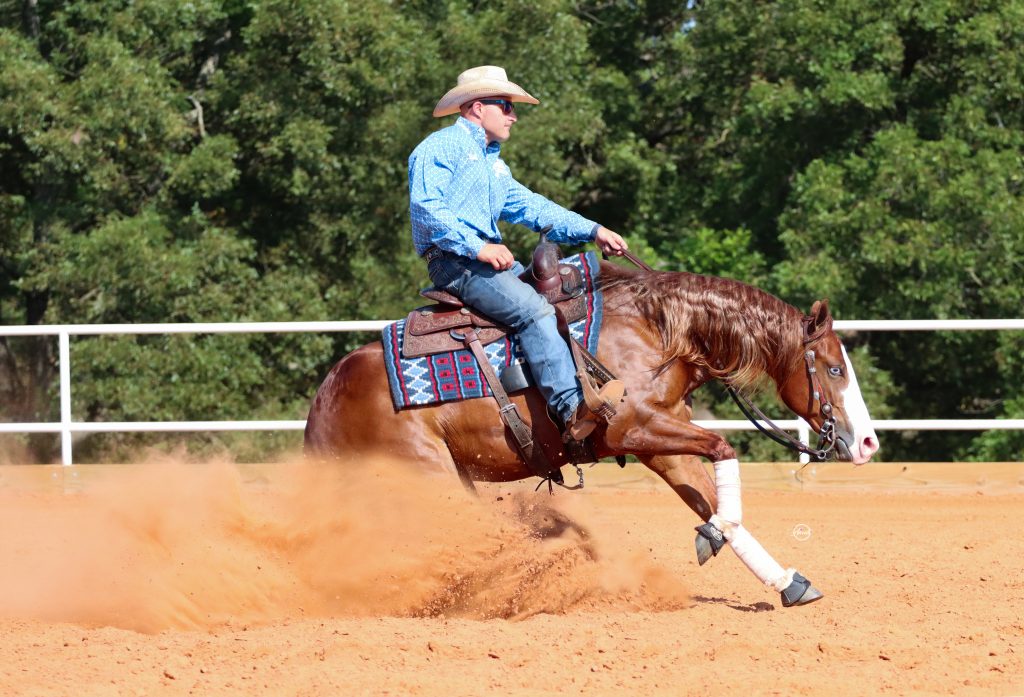
Born in Italy, Max Tallone didn’t have to opportunity to ride a horse until he was 18 years old although he had always dreamed of it. At 18, he bought his first horse which he rode for fun and trail rides, but he wanted more. Two years later, he bought his first reining horse and applied himself to learning the tricks of training from the ground up. Only five years after riding his first horse, Tallone began applying his knowledge to a career working at Arcese Quarter Horses in Verona, Italy for a couple of years and then for a year in Rome at Angelucci Quarter Horses.
Desiring a deeper understanding of training reiners, Tallone found his way across the Atlantic Ocean to Schmersal Reining Horses in Scottsdale, Ariz. While in the states, Tallone also worked for Sterling Ranch and Randy Paul before starting his own business in Whitesboro, TX in 2014.
“I spend a lot of time training two-year-olds and selling them,” Tallone said. “My business has been very successful doing that.”
When working young horses, Tallone says its important to remember that they are all individuals. He said, “You have to keep in mind that they are all different and they all thing in a certain way. Once you figure out the way that they think, you’ve got to work with them based on that. Some of them are more mature than others; some get fresher; some are a little later coming around. You just have to be patient and wait for some of them to be ready. They are not all the same.”
Long before This Joe Got A Gun ever entered the Jim Norick arena with Dan Huss in the saddle, Tallone owned his mother in a partnership with a client. “We bought [This Girls Got A Gun] as a yearling at the Legacy Sale. She was just a fantastic horse, extremely great-minded, extremely, extremely, talented.”
When it came time to breed the mare, she was intended for Magnum Chic Dream and another mare was to be bred to Lil Joe Cash. “We tried twice [to breed her to Magnum Chic], and we flushed the mare twice, but we couldn’t get an embryo done so we switched the breedings.”

The switch proved successful and This Girls Got A Gun was bred to Lil Joe Cash resulting in This Joe Got A Gun and the other mare was bred to Magnum Chic Dream. “He was born on my place,” Tallone said. “We had him since day one, and we raised him and started him, and rode him until Dan [Huss] came and bought him in March of his 3-year-old year.”
Of the colt’s trainability, Tallone had nothing but good to say. “He was super fun, just a great-minded horse. You kind of had to be careful with him because he was a little bit of what we call an overachiever. When you teach him to do something, you had to back him off and say, ‘Okay, you don’t need to go so fast or do it so hard.’ On a scale of 1 to 10, if you asked him to do something at a two, he was trying to do it at a five or six. He is one of those horses that makes you feel like you are a very good horse trainer because whatever you asked him to do, he is just going to do it for you,” he shared.
“I called Max looking for a Rookie horse,” Dan Huss said. “He has just sold it so he asked me if I would be interested in a nice Futurity prospect. He showed me [This Joe Got A Gun]. ‘Freddie’ was a big stopper with good foot speed in the spin. For so early in the year, he was doing a lot. Max did a nice job.”
Dan’s client, Jamie Walters, purchased the colt for Dan to show in the Futurity after which he will be transitioned to fit Walters as a Derby horse. Tallone made the trip to Oklahoma City just to watch Freddie in the finals. “I didn’t have any 3-year-olds to show because I had sold them all,” he said. “I think Dan has done an amazing job with him because he was great. I know that the horse was good, and I knew that Dan could get it done. I was very proud of both of them.”

